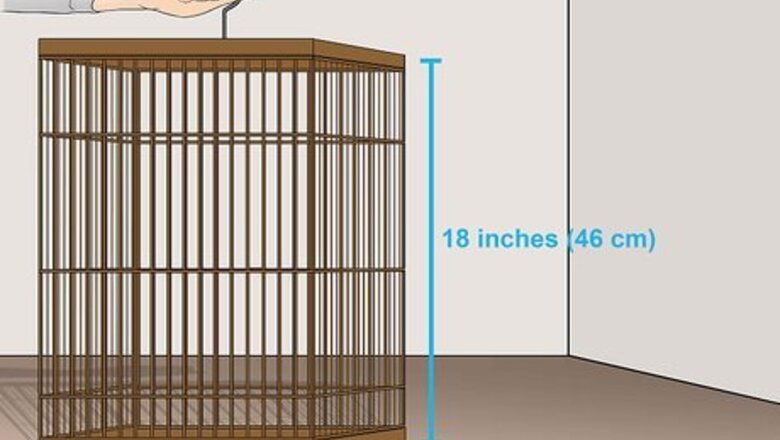
views
Setting up the Cage
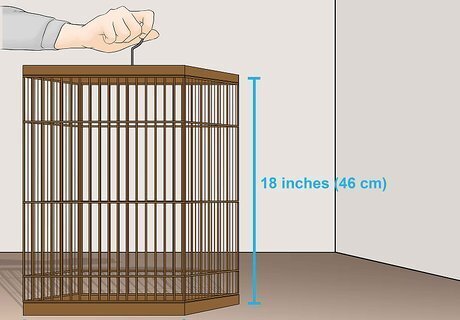
Choose a large cage with a solid floor and plenty of vertical space. Aim for a cage that is at least 18 inches (46 cm) long and 12 inches (30 cm) wide. Keep in mind, you'll be housing more than the 2 birds you buy, so you'll need plenty of space. A solid bottom to the cage is important because finches like to feed on the floor.
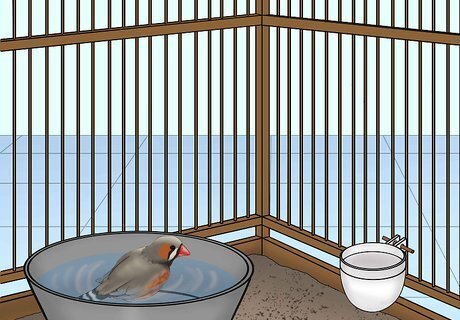
Set large feed and water containers in the cage. They should be large enough to fit four finches in it, as the finches will take baths in the water container. You can set these on the floor of the cage if you prefer but leave space for the birds to forage, as well.
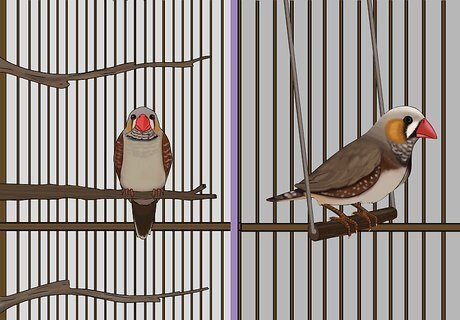
Add a variety of perches to the cage. Place perches throughout the cage at different heights. The final perch should be 6 inches (15 cm) from the top of the cage so the birds can roost. Add plenty of perches but not so many that the finches can't fly around the cage. Also, don't set perches directly over the food and water dishes, as that can lead to the birds contaminating the dishes. You can use dowel rods or even large twigs. Aim for a width of 0.2 inches (0.51 cm) or so. Try attaching some perches just on one end. That gives the perch a little give, which provides the finch with exercise. Finches generally won't pay that much attention to toys, but you can use small toys meant for birds if you'd like, as well. They may enjoy swings or ladders.
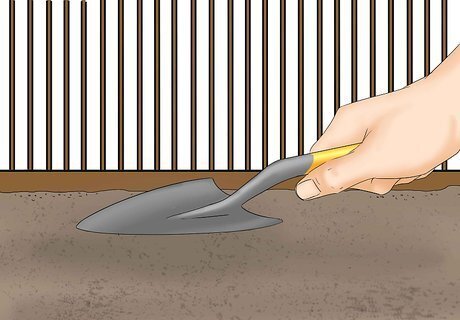
Put litter in the bottom of the cage. You can use sand or wood chips or shavings. The birds will often feed on the bottom of the cage, and they will dig through the litter you put down. Whatever you use, you will need to change it regularly, at least once a week.
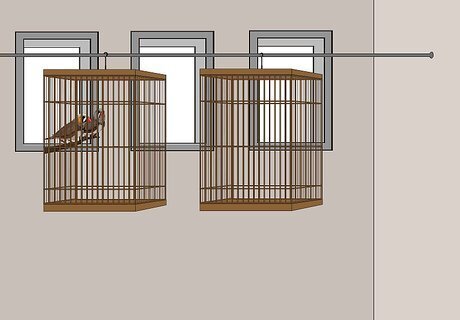
Place the cage in a warm, quiet area. Too much noise can alarm your finches, and they may not want to breed. Set them in an area where they can get some peace and quiet, away from the heavy traffic in your house. Also, put them in an area that's not too drafty.
Mating Finches
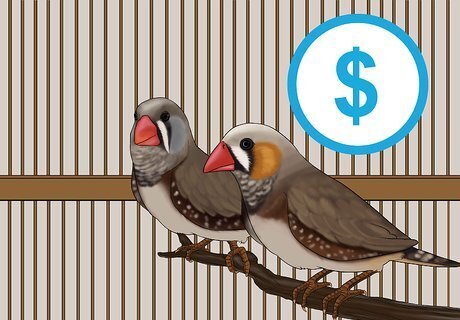
Buy a pair of male and female Zebra finches. You can ask for a pair, or if you want to pick them out yourself, look for the male and female characteristics. Males have red-orange cheeks and a black stripe across their chest. Females have gray cheeks and no bars. However, you won't be able to see these differences in birds under 6 weeks, so ask for help sexing them if you're unsure. You can buy finches from a pet shop, online, or from a reliable breeder. If possible, get a pair that has bonded. Ask the breeder or shop owner if they have a bonded pair. The birds must be healthy and be 9-to 12-months old to breed. Healthy birds will be alert and active, and their feathers will look clean and unruffled. Make sure the birds are not related to each other, as you don't want to inbreed your birds. That can lead to genetic defects and unhealthy babies. If you use a very large cage, you can set up multiple pairs in the same cage, as these are social birds.
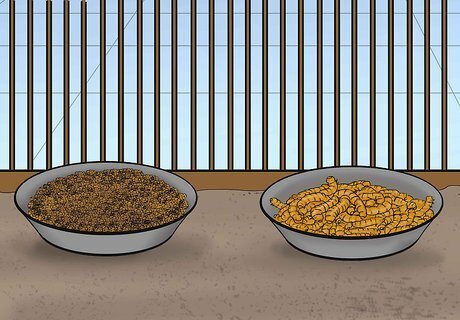
Feed your birds sprouted seeds and greens to encourage breeding. Your birds can eat a finch seed mix, mealworms, and Panicum millet. However, make sure to include greens and sprouted seeds in addition, as that will tell your birds it's time to start breeding. You can put their food in dishes and in the litter on the floor. You can sprout the bird's seed mixture yourself or buy sprouts from the grocery store. Wash any greens thoroughly and chop them finely.
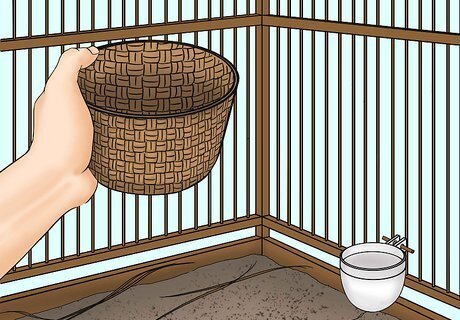
Place nesting materials in the cage. Nesting materials will encourage your birds to breed. Put in dried grass or nesting material from the pet store, which your finches will use to build their nest. Finches will also use nesting boxes you place in the cage. Try small wicker or even plastic baskets or bowls. Place a couple throughout the cage. Avoid using string in the cage.

Wait for your birds to mate. Finches will usually breed readily once the conditions are right. You may see a male carry a piece of grass around while it hops after a female; he's showing he can build a nest. If your finches haven't mated within a month, something may be wrong, and you should contact a veterinarian. While the birds are courting and nesting, make sure that any greens you feed them are getting eaten; some birds may want to take them into their nests, and they will rot.
Caring for the Finches and Chicks
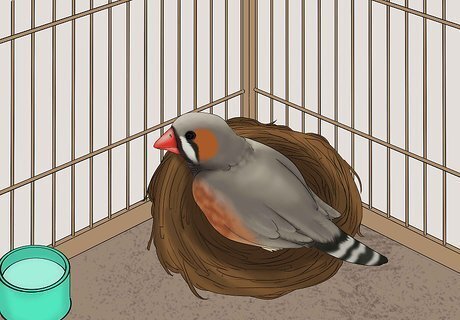
Watch for the female to start laying eggs and the incubation period. A female will lay up to 7 eggs, doing 1 a day. Both the male and female will sit on the eggs during this period, incubating them. Once the eggs appear, they will hatch in about 2 weeks. If an egg hasn't opened in 3 weeks, it's not going to. Take it out of the cage.
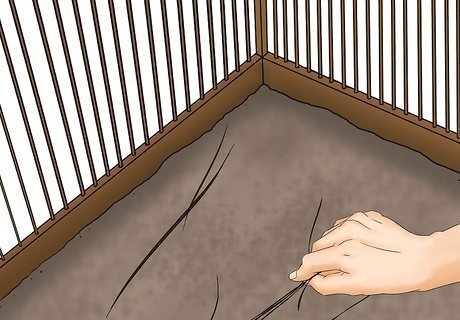
Remove the nesting material after the female has started laying. If you notice an egg, remove the extra nesting material from the bottom of the cage. If you don't, the birds may build layered nests, with a clutch of eggs on the bottom of the nest, nesting material, another clutch, and so on. These birds will keep breeding over and over, but to stay happy and healthy, they really need a break between clutches of eggs. You can also remove the other nesting boxes if you don't have other breeding pairs in the same cage.
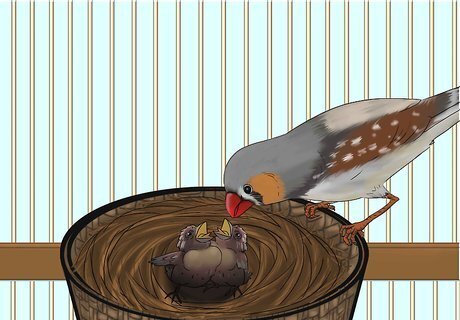
Let the hatchlings be fed by their parents. The finches will know how to feed the babies, so you do not need to do anything. The babies will have feathers in about 2 weeks and start moving out of the nest at about 18 days. After that, the parents will feed the chicks another 2-3 weeks. In fact, if you try to wean the birds early, it can cause poor health.
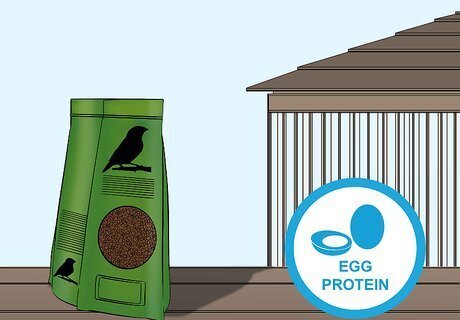
Provide a complete egg protein while the birds are feeding their young. Look for a bird food mix that has egg in it, as that is a complete protein. Feeding it to your birds while they're caring for their young will help raise healthier, stronger birds. You can also continue to feed them their regular food, too.
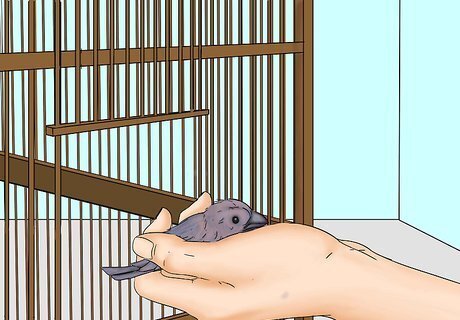
Watch for the hatchlings to be weaned. Typically, after 4-5 weeks, the parents will start chasing off the babies to begin weaning them, particularly if they've got another clutch started. If you start seeing this behavior, move the hatchlings to a new cage so they can get some peace from their parents. If the babies are too young to be moved, you can take the new eggs away from the parents instead and dispose of them, which will get the parents to focus on the older hatchlings.
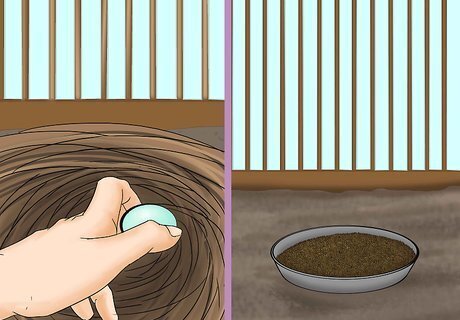
Discourage too frequent breeding. These birds will continue to breed over and over if you let them, but you really shouldn't allow a single pair to breed more than 4 times a year. To discourage them, put the birds on finch seed mix and avoid feeding them greens. Also, only have nesting materials in the cage when you want the birds to breed. If you need to, you can take out a clutch of eggs in the first couple of days and dispose of them. That will give the finches a break from breeding.



















Comments
0 comment